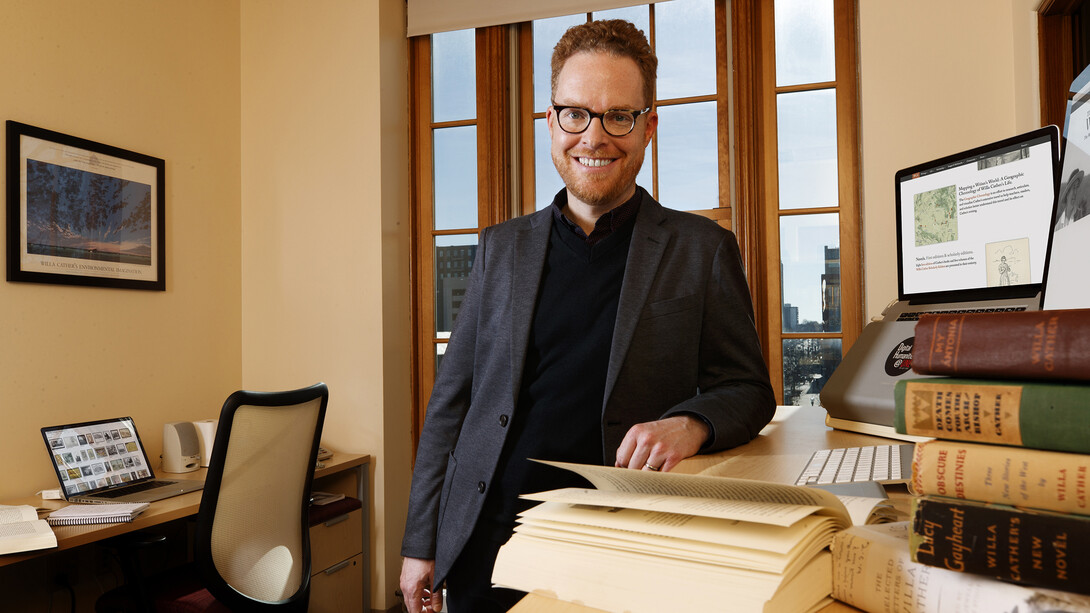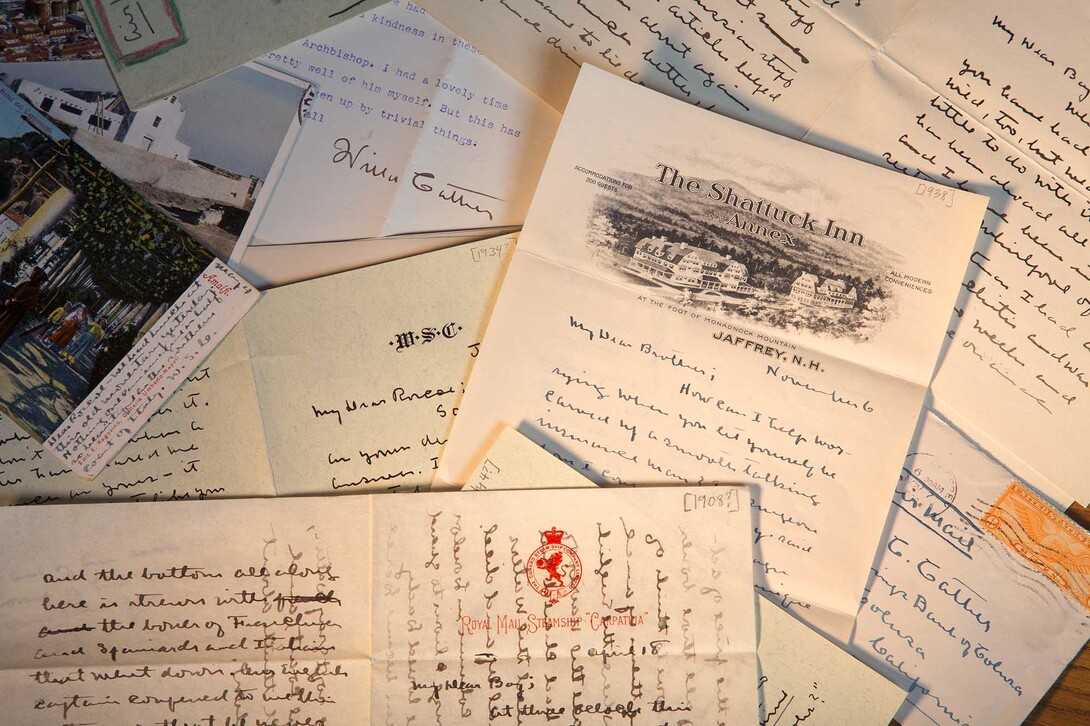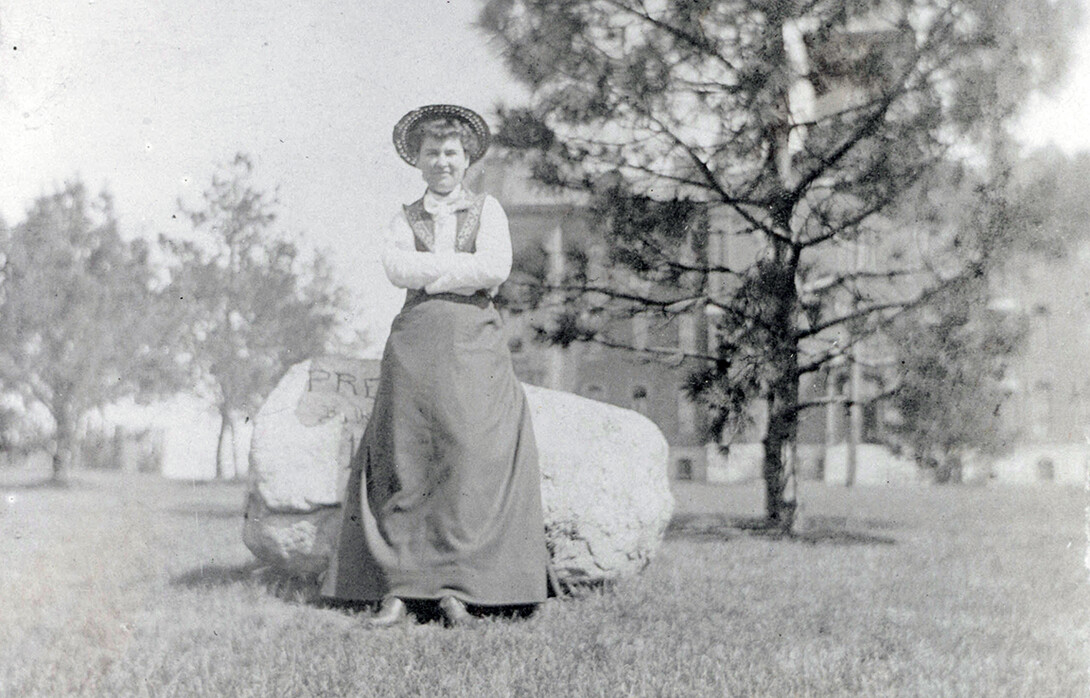
A college assignment led Nebraska’s Andy Jewell to become one of the preeminent experts on Willa Cather.
In his March 26 Nebraska Lecture the professor of digital projects with the University Libraries, will examine what contemporary society can learn from Cather’s life and literary works. Ahead of the talk, Nebraska Today sat down with Jewell to learn more about that pivotal college assignment and what continues to inspire his study of the literary icon.
What was your first Willa Cather encounter?
Even though I grew up in North Platte and was an undergraduate at Hastings College, my first Cather experience wasn’t until I was working on my master’s degree at the University of Missouri-Columbia. It was a fictional short story, “Neighbour Rosicky,” assigned for an American literature course. I remember thinking I wouldn’t care for the story, but it really blew me away. It caught my attention and got me thinking that there might be something great going on there.
Reading Cather is basically a rite of passage for Nebraska high school students. How did you earn a diploma without a Cather experience?
I have no idea. It’s certainly something I’ve thought about many times. But, it was a good thing because, while Cather’s writing style is very accessible, she writes for grownups. The ideas and emotions in her stories are not that accessible to young people. You need to be older — to have some necessary life experiences — to fully appreciate the depth of Cather’s writing.
What about “Neighbour Rosicky” drew you in?
It is a story about kindness and that struck me as not a common thing in modern literature, where most stories are about pain. I loved the respect she showed the people within the story and the world she created. The story shows you don’t have to lead a fancy life to be valuable and important — which is a theme that carries through all of Cather’s work.
When did Cather become your research focus?
After finishing “Neighbour Rosicky,” I realized there was something great going on with Cather’s writing. That led me to read “My Ántonia” followed by “O Pioneers!” The summer before I started my doctoral program here at the University of Nebraska–Lincoln, I read every Cather story I could get my hands on. About that same time, our daughter was born — she graduates high school this year — and I remember holding her in one hand while reading Cather in the other. I associate the start of my Cather study with her birth.
How many of Cather’s known writings have you studied?
I think I’ve read all of them — from her books and short stories to the 3,079 known letters. We just added a batch of 621 letters to the Willa Cather Archive. It’s a great resource for anyone who wants to know about Cather. We hope to have all of her letters added to the archive by 2021.

How did so many of her letters survive?
A great many of them were kept after Cather became a well-known literary figure. But, the very rare ones are from before she became popular. We have a few in the state historical archives that were written when Cather was a teenager. They survived simply because a friend of the family held onto them and they were eventually donated due to their importance.
Can you pick a favorite letter?
When we first got the donation of the Roscoe and Meta Cather Collection in 2007, I remember reading some copies of the letters before going to bed. There was this one letter that Cather wrote to her brother, Roscoe, in 1938. In it, she talks about her “classic” writing style and how it’s the “heat under the simple words that counts.” It was wonderful to learn about Cather’s own reflections on her style. I remember reading it and saying that this letter should be famous.
How do these letters further Cather scholarship?
While they offer glimpses into her personal life, the letters, when combined with Cather literature, create a network of greater understanding. Quite often, one letter allows you to provide a date for another letter which can then be combined with a time in her life when she was working on a book or story. The letters really allow us to fill in some of the gaps in Cather’s life.
What continues to inspire your study into Cather’s writing and life?
I continue to love and be moved by Cather’s works. And this research has opened so many doors to unique experiences with people and places all over the world. I’m also inspired by the people I get to work with on these projects. The big motivator for me is getting to contribute as a team, to share pleasure in Cather’s work and make discoveries that lead to a greater understanding of an amazing author.

Did Cather have any special places here on campus?
Well, she graduated in 1895 and the only building standing from her time on campus would be Architecture Hall, which was then the library. There’s also a famous photo of Cather standing in front of a rock. That same rock is now located outside of Morrill Hall.
What is one Cather book everyone should read?
Usually, when people ask me that question, I ask what they like to read because Cather wrote many unique works. But, if forced to choose, I would go with “My Ántonia” because there’s just something special about it. It’s a good entry point for people to explore her style of writing and see how people are the focus of her work. “My Ántonia,” which is celebrating a 100th anniversary this year, is a great introduction to her work.
What do you hope people learn during your Nebraska Lecture?
I’m going to share a few core ideas that I think we “inherit” from Cather’s life and work, and I hope the lecture provides an example of how central the humanities are to our lives, and how study of the work of authors like Willa Cather can enrich us in ways we don’t expect.
What is the next step in your Cather research?
In July, I’m going on leave to start work on a new Cather biography. That will include spending a lot of time on campus, which is the global home base for Cather scholarship. I also plan to go to Red Cloud and areas in the southwest that were important to Cather. For me, the well has not yet run dry on Cather research. I think I have a sense of Cather that has not yet been represented in the biographies that are available. My goal is to bring that to life.







